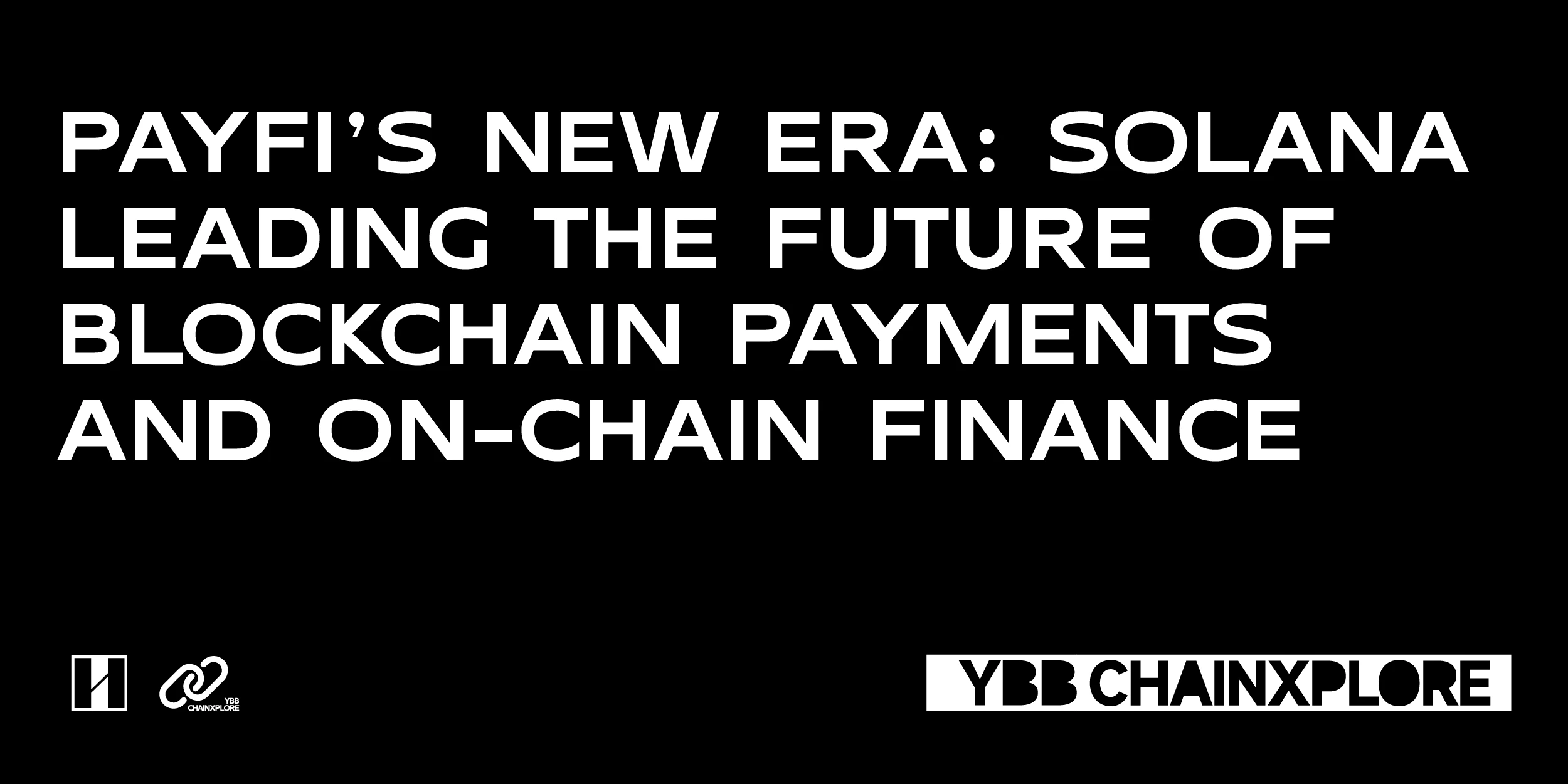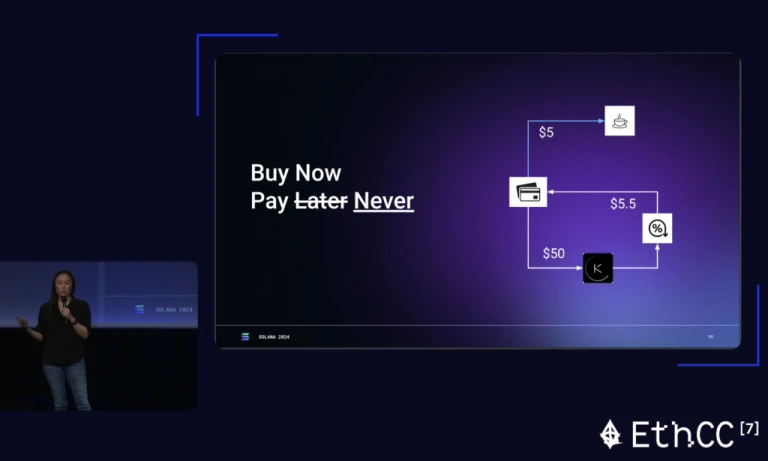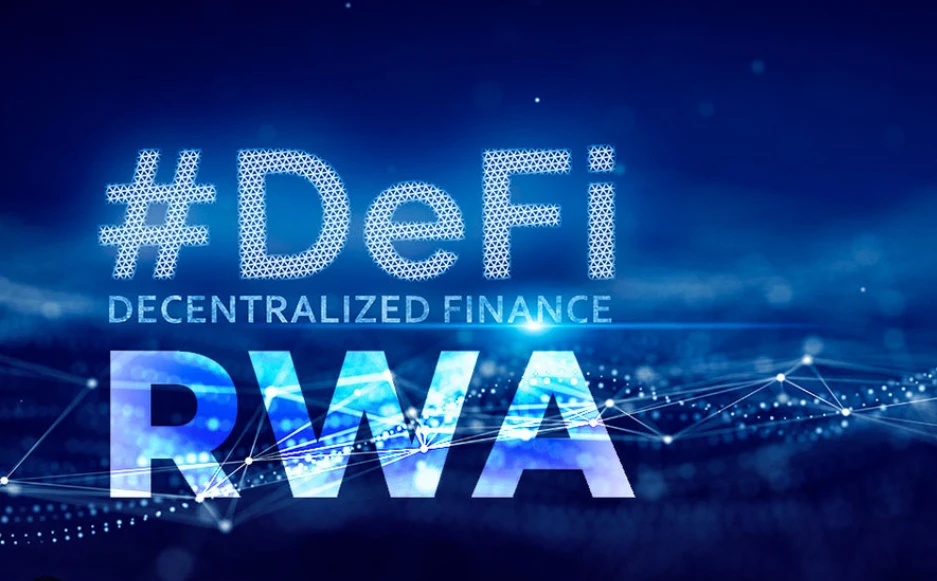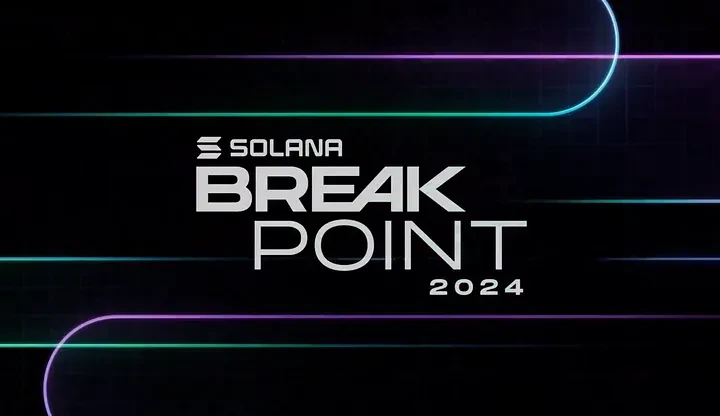Original author: YBB Capital Researcher Ac-Core

TL;DR
The concept of PayFi was proposed by Lily Liu, Chairman of the Solana Foundation, in her keynote speech “The Emergence of PayFi: Realizing the Vision of Cryptocurrency” at the 7th EthCC Conference;
The core concepts of PayFi: 1. Emphasis on timely settlement, which is especially valuable in speculative transactions, 2. Supporting the new model of Buy Now, Pay Never, providing a new path for creator monetization, invoice financing and payment risk management;
The core advantage of PayFi in realizing its vision is to use Solanas high performance to break the barriers between the real world and blockchain. At the same time, regulation and scalability are the biggest challenges to achieving widespread adoption.
Lily Liu gave a brilliant explanation of PayFi: PayFi is about creating a new financial market around the time value of money. On-chain finance can enable new financial primitives and product experiences that traditional finance or even Web2 finance cannot achieve.
1. What is PayFi?

Image source: The 7th EthCC Conference
PayFi stands for Payment Finance. It is a new concept of innovative paradigm that integrates payment and finance proposed by Lily Liu, Chairman of the Solana Foundation, at the EthCC conference in July 2024. Its core is to emphasize instant transactions and thereby improve the efficiency of speculative transactions and various financial operations. According to the definition of the proposer Lily Liu, PayFi is a programmable financial structure that develops new financial innovations on top of the settlement layer and can autonomously process payment transactions. The following is a summary based on the content of Elponcho:
PayFi’s Vision
A system for building programmable money in an open financial system that provides users with economic sovereignty and the ability for self-custody.
PayFi’s application scenarios
New technologies give rise to new markets. PayFi supports the Buy Now, Pay Never model, using the power of on-chain finance and instant settlement to enable profits generated on the chain to cover immediate consumption needs in real time. For example, a user can invest $50 on the chain to earn interest, and the immediate settlement and payment of the interest can be used to buy a free cup of coffee.
In addition, PayFi can also support the monetization of creations based on the progress of goal completion (for example, YouTubers gradually receive advertising revenue when reaching 1 million views), provide bill financing, manage payment processing risks, and develop a global private credit pool on the Solana chain. Lily Liu believes that PayFi will surpass DeFi in the future and lead a new financial trend.
Solana and PayFi
Lily Liu believes that Solana stands out among blockchains for its high performance, always showing the characteristics of fast transaction speed and low cost, and has advantages in the liquidity of capital and talent. Obviously, Solana is a strong candidate to realize the vision of PayFi.
PayFis three key elements for blockchain success
Lily Liu believes that the three key factors for the success of blockchain are: fast and low-cost transactions, a broad user base, and a strong developer community. She said that Solana is currently the only ecosystem that fully possesses these three elements.
The Future of PayFi and Solana
At the end of the speech, Lily Liu shared the scenarios of various financial applications on the Solana platform, such as supply chain finance, payday loans, credit cards, corporate credit, interbank repo market, and insurance market. These applications show that Solana combined with PayFi has great potential to change the traditional financial system in the future.
In the article Understanding PayFi: Solanas Next New Narrative, Lily Liu said that the core of PayFi lies in the time value of money, and explained it with three important cases:
Buy Now, Pay Later: Most people are familiar with Buy Now, Pay Later, but Buy Now, Pay Never is almost the opposite. The former is to optimize cash flow by paying in installments and bearing certain interest costs, while the latter is to invest funds in DeFi products, earn interest through lending, and then use the interest to pay for consumption. Although this sacrifices cash flow, there is no need to use the principal.
For example, if a user buys a $5 coffee, he can deposit $50 into a lending product. When the interest accumulates to $5, he can use the interest to pay for the coffee, and the funds will be returned to the users account after being unlocked. This process relies on the automated execution of programmable currency.
Creator monetization: Many creators encounter cash flow problems during content creation. Creation requires time and money, but the returns are often delayed. This period may lead to a shortage of funds, which in turn affects the progress of creation. In Lily Lius conception, PayFi can help creators accelerate monetization. For example, if the expected income of a video is $10,000, but it takes a month to arrive, the creator can immediately get $9,000 in cash through PayFi and realize income in advance. Although it will sacrifice some income, it can improve cash flow.
Accounts receivable: It is a common financial relationship between a company and its customers, which refers to the amount of money owed by customers to the company. Due to the existence of accounts receivable, companies sometimes face the problem of insufficient cash flow. In order to solve this problem, companies usually mortgage accounts receivable to financing companies or sell them at a discount to obtain immediate funds and maintain stable cash flow. PayFis goal is to further simplify and optimize this process. Through blockchain, it accelerates settlement, improves capital turnover efficiency, and lowers the threshold, so that more companies can use this supply chain financial tool to accelerate capital flow.
2. How does PayFi connect to DeFi? RWA becomes a bridge to a new narrative

The origin of blockchain technology can be traced back to the revolutionary white paper Bitcoin: A Peer-to-Peer Electronic Cash System published by Satoshi Nakamoto in 2008, which laid the foundation for a new era of decentralized payments, not only creating a new form of currency, but also completely changing the payment system deeply rooted in traditional finance. PayFi uses digital assets and decentralized finance (DeFi) tools to manage the flow of funds through blockchain technology and smart contracts. Its core concept is to optimize the time value of funds and shorten settlement time through decentralized technology. The main operating principles include:
Time Value of Money (TVM): PayFi emphasizes improving the time value of money and helping users improve the efficiency of using money. For example, users can deposit money into a lending platform and use the interest generated to pay for daily expenses. For example, when a user buys a $5 cup of coffee, they can lock in $50 in funds. When the interest is enough to pay for the coffee, the principal does not need to be used;
Smart Contract Automation: Smart contracts are at the core of PayFi, which can automatically execute complex financial operations based on predetermined conditions, thereby reducing intermediary involvement, speeding up transactions, and reducing costs;
Tokenization of Real World Assets (RWA): PayFi tokenizes real world assets such as real estate and accounts receivable to facilitate cross-border payments and capital flows. This not only improves the liquidity of physical assets, but also provides a new platform for global transactions.
As the demand for sustainable value assets in the crypto ecosystem rises, perhaps RWA will naturally become a popular option. In the past two years, tokenized treasury bonds with a yield of 4-5% have become the first choice for on-chain capital, and the total value of hedging has rapidly increased to US$2 billion. With the emergence of inflation and central bank interest rate cut signals, treasury bond yields have fallen, and capital will seek other high-yield, low-risk assets. This provides an opportunity for PayFi to rise in the RWA field.
Typical PayFi scenarios may include:
Cross-border payment financing: Arf has changed the traditional way of cross-border payment by providing on-chain liquidity solutions for financial institutions, supporting 24/7 instant, transparent and low-cost USDC-based settlement, eliminating the need for global pre-deposited funding accounts. Cross-border payment financing is highly capital efficient and scalable;
Digital asset-backed enterprise cards: Rain provides Web3 teams with enterprise card settlement liquidity backed by USDC. Enterprises pledge funds to a vault, set a credit limit in the vault, and automatically repay the balance of the enterprise card through on-chain liquidation of assets at the end of each settlement cycle, reshaping spending management;
Trade Finance: BSOS combines the enterprise resource planning (ERP) platform with on-chain liquidity to create real-world assets (RWA) in the supply chain, providing shorter-term financing options to meet the funding needs of enterprises.
Real World Assets (RWA) can include:
Instant RWA settlement: Even for highly liquid assets such as treasury bills or tokenized funds, settlement time is usually 2-4 days, as the underlying assets need to be liquidated before they can be redeemed. On-chain liquidity pools allow for 24/7 real-time subscription and redemption of these assets, ensuring fast and transparent transactions.
DePIN Financing: As the DePIN ecosystem expands rapidly, many projects are based on the idea of sharing the cost of large-scale infrastructure construction and redistributing future value. For example, TLay provides key trust infrastructure to accelerate the adoption of DePIN; Peaq customizes L1 for DePIN and provides functions that enable machines to efficiently trade with each other or interact with humans, supporting the development of the machine economy.
At the same time, the birth of stablecoins has become a bridge between fiat currencies and blockchain, driving the emergence of the first wave of real payment scenarios. Since 2014, stablecoins have achieved exponential growth, proving the growing demand for blockchain innovation in the payment field. Today, stablecoins already support approximately $20 billion in organic payments per year, close to Visas annual payment processing volume. Although the crypto ecosystem is constantly overcoming challenges such as poor user experience, severe latency, high transaction costs, and compliance to unlock the unlimited potential of stablecoins, there is still room for further development. If we look back at the history of payment systems, financing mechanisms have played an important role in driving their development. For example:
Credit cards: Contribute $16 trillion to merchant payments annually, demonstrating how financing can drive widespread adoption and utility;
Trade finance: supporting $10 trillion in B2B payments each year, underscoring the critical role finance plays in global commerce;
Cross-border payments: Supporting global remittances and settlements by prepaying $4 trillion in funding. Today, 1 in 6 households worldwide rely on remittances.
Without payment financing, global liquidity will be greatly limited. Similarly, without a financing mechanism, the utility and popularity of Internet native currencies will be hindered. PayFi was born to address these limitations. Lily Liu, President of the Solana Foundation, proposed the concept of PayFi and clearly stated its vision: PayFi is a new financial market created around the time value of money. On-chain finance can realize new financial primitives and experiences that traditional finance and even Web2 finance cannot provide.
3. Thoughts on PayFi

Image source: Solana official website
In terms of the ability to create momentum in the crypto market, Solana has always been at the forefront, and various narratives continue to stimulate the activity of the speculative market. The biggest advantage of the new narrative PayFi is that it returns to the innovation of blockchains natural subversion of traditional finance. It uses the attributes of decentralization and security to reduce the risk of fraud and improve the integrity of transactions, and eliminates the middlemen of traditional financial payment processing. The complete transaction process is compiled on the chain, which overall reduces the threshold for users to participate in finance. At the same time, from a narrative perspective, PayFi has become a bridge between RWA and DeFi to connect the real world.
Although PayFi has the potential to undertake large-scale applications of blockchain in the future, it still faces some challenges that may limit its widespread adoption. The first and foremost issue is regulation. Currently, financial institutions around the world have not fully understood or formulated a legal framework for blockchain operations. The first threshold to connect to the real world is legality. Another obstacle is scalability. Blockchain networks may be congested during peak hours, affecting the speed and cost of transactions, and the speed of block production between different chains is difficult to coordinate. Market acceptance may be lacking. Currently, enterprises and users are still less receptive to new technologies. When mentioning blockchain, people still hold the mentality of talking about currency. If blockchain is to completely open up the channel to the real world and continuously optimize its ability to reach more fields, the effect of breaking through the circle still needs to be continuously optimized.
Reference articles:
1: PayFi: The frontier of blockchain payment finance










